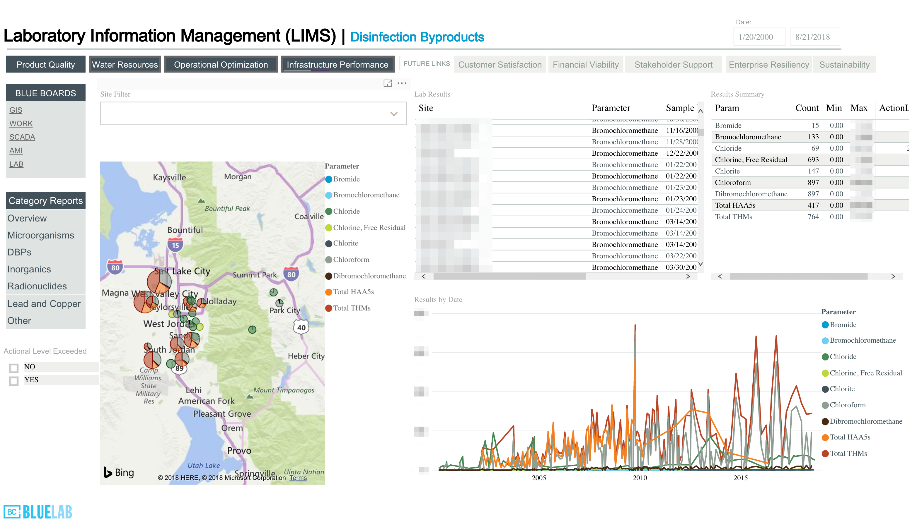As part of a larger project to replace outdated software and develop a sustainable Supervisory Control and Data Acquisition (SCADA) system, BC implemented a user-friendly interface to equip Jordan Valley Water Conservancy District (JVWCD) engineers and operators with better, more accessible information, to make informed decisions. The interface removes data silos between the operations, maintenance, engineering, and communications departments by integrating data from five key business systems: Laboratory Information Management System (LIMS), Computerized Maintenance Management System, Advanced Meter Infrastructure, Geographic Information System (GIS), and SCADA. Data from LIMS, the District’s GIS and SCADA data was integrated through our BC Blue Lab dashboard to create an interactive map with water quality parameters to easily give users a better understanding of water quality data across the distribution system.

District staff are now able to see how water quality responds to operational changes in near real-time; this data informs business and operational decisions.
“The new system will allow us to shift our focus from collection of data to analysis of the data to make better real-time and long-term decisions. Rather than needing years to memorize and gain institutional knowledge, our staff can rely on readily available information to make decisions.”
Shazelle Terry, JVWCD Operations District Manager

